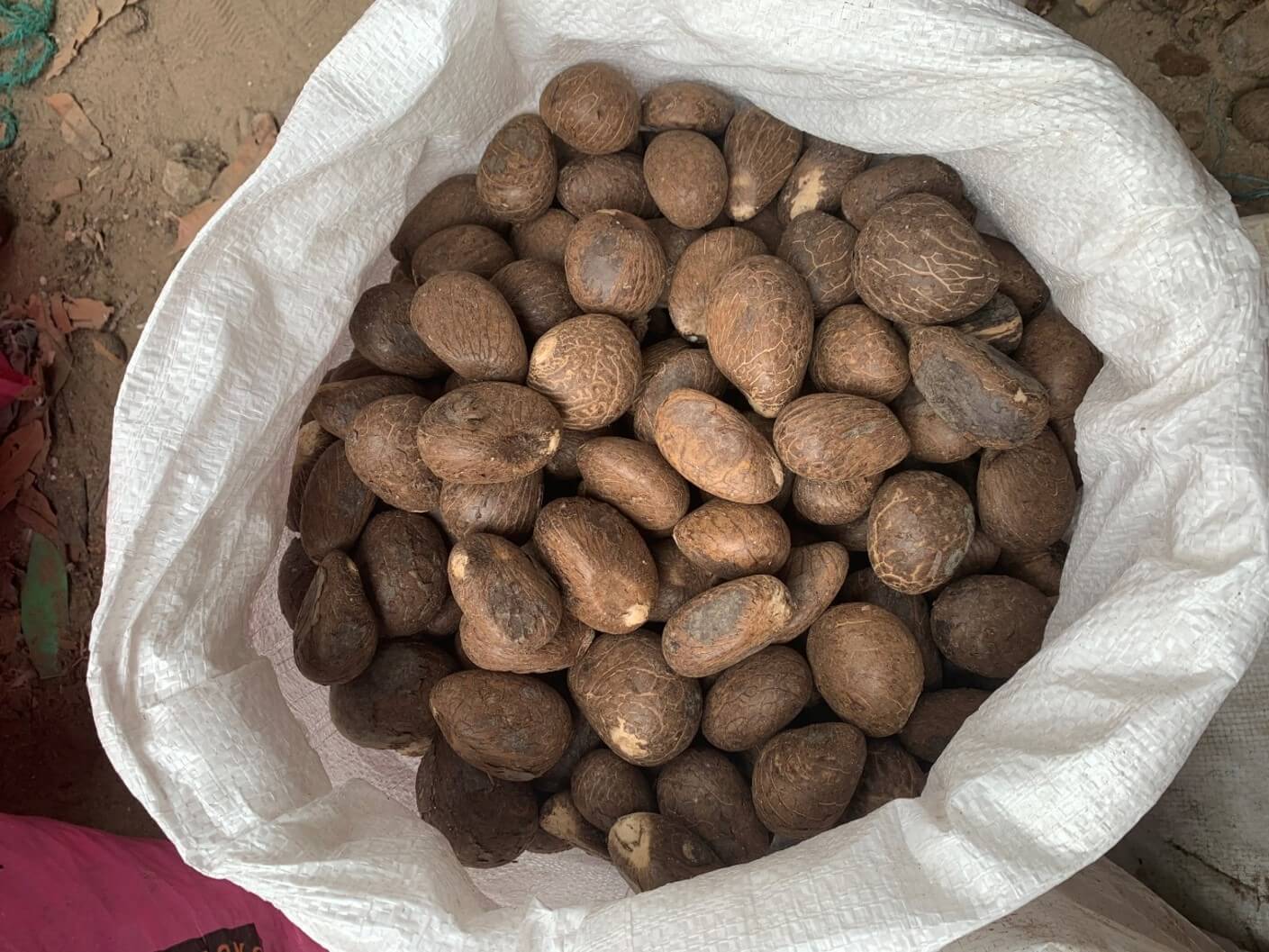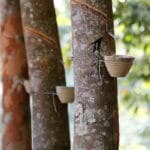Nature provides remarkable alternatives to traditional materials, and the tagua nut stands out as a shining example. This “vegetable ivory,” a gift from the rainforests of South America, is transforming the worlds of art, fashion, and manufacturing with its versatility and eco-friendly appeal. Join us as we explore the fascinating journey of the tagua nut, from rainforest to retail, and discover its potential to shape a sustainable future.
What is Tagua Nut? Nature’s Vegan Ivory
Tagua nut, often called “vegetable ivory,” is the hardened endosperm of seeds from specific palm trees, primarily of the Phytelephas genus (“elephant plant”). This remarkable natural material closely resembles animal ivory in appearance and texture, offering a sustainable and ethical alternative. Its natural white color, marbled grain, and ability to be dyed make it incredibly versatile for crafting and design. If you want to know more abut the Tipuana tree, we have an article about it.
The key species yielding tagua nuts include Phytelephas macrocarpa (found in Peru and Bolivia) and Phytelephas aequatorialis (native to Ecuador), also known as the Cade Palm. The Caroline ivory-nut palm, found in the Caroline Islands, is another source of this valuable material. These palms thrive in the biodiverse ecosystems of coastal and lowland rainforests, usually below altitudes of 4,500 feet.
The Many Faces of Tagua: From Seed to Sculpture
The tagua nut’s journey begins in the lush rainforests of South America, mainly in Ecuador, Colombia, and Brazil. Within these vibrant ecosystems, the tagua palm takes 10-15 years to mature and bear its fruit—large, woody pods known as “cabezas” containing the precious nuts. Sustainable harvesting practices are essential for preserving these rainforests and empowering local communities.
After harvesting, the tagua nuts are dried, a process that hardens the endosperm into the ivory-like material we know. This hardened material can be carved, shaped, and dyed into a wide array of products:
- Jewelry: From intricately carved beads to polished pendants and earrings, tagua nut lends itself beautifully to jewelry making. Its ability to accept dyes opens up a world of color possibilities, from vibrant hues to subtle earthy tones.
- Buttons: Tagua nut’s durability makes it ideal for buttons that can withstand daily wear and tear while adding a touch of natural elegance.
- Figurines & Sculptures: Skilled artisans transform tagua nuts into detailed figurines, sculptures, and decorative pieces, showcasing the remarkable versatility of this natural material.
- Games & Inlays: Tagua nut can be crafted into dice, game pieces, and inlays for furniture and musical instruments, adding a unique touch of natural beauty.
- Emerging Applications: Research suggests potential uses in precision engineering due to tagua nut’s hardness, and the possibility of creating bioplastics offers a promising sustainable alternative to petroleum-based materials.
The Eco-Conscious Choice: Benefits of Tagua
Choosing tagua nut products goes beyond aesthetics; it’s a conscious decision to support sustainability and ethical practices:
- Protecting Elephants: Tagua nut provides a crucial alternative to elephant ivory, reducing the demand that fuels poaching and the devastating ivory trade.
- Rainforest Conservation: Sustainable harvesting of tagua nuts incentivizes the preservation of rainforests, providing economic opportunities for local communities while protecting vital ecosystems.
- Biodegradability & Renewability: Tagua nut is a biodegradable and renewable resource, minimizing its environmental impact and ensuring a sustainable supply for future generations.
The Tagua Lifecycle: From Edible Treat to Durable Material
The tagua nut’s story is one of transformation. In its young, immature stage, the nut’s interior is soft, almost liquid, with a mildly sweet flavor reminiscent of coconut milk. In some South American cultures, this “vegetable milk” is consumed as a beverage or used in cooking. The soft flesh can also be eaten raw or cooked.
As the tagua nut matures, it undergoes a remarkable transformation, hardening into the ivory-like substance used in crafts. This hardened nut is no longer edible but gains the durability and workability that make it so prized. This natural process reflects the resourcefulness of nature and provides both sustenance and sustainable materials.
Tagua’s Future: A Growing Movement
Consumer awareness of sustainability is rising, and with it, the demand for eco-friendly materials like tagua nut. This growing demand fuels innovation, with researchers exploring new applications, including bioplastics and biocomposites. Tagua nut’s potential to contribute to a circular economy and a more sustainable future is vast.
| Feature | Tagua Nut | Animal Ivory |
|---|---|---|
| Sustainability | Renewable and eco-friendly | Contributes to species extinction |
| Environmental Impact | Supports rainforest conservation | Damages ecosystems |
| Ethical Concerns | Harmless harvesting practices | Involves poaching and illegal trade |
| Cost | Generally less expensive | Typically more expensive |
| Versatility | Used in crafts, jewelry, buttons, and more | Limited applications |
| Durability | Hard and durable | Can be brittle and prone to cracking |
| Appearance | Resembles ivory | Unique, natural appearance |
By choosing tagua nut, you are participating in a movement that values both beauty and responsibility. You are supporting artisans, protecting elephants and rainforests, and embracing a material that embodies the potential for a truly sustainable future.
- Unlock Water’s Symbolism: A Cross-Cultural Exploration - April 20, 2025
- Identify Black and White Snakes: Venomous or Harmless? - April 20, 2025
- Unlocking Potential: Origins High School’s NYC Story - April 20, 2025















